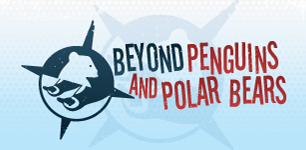Did you know that we’re in the midst of the International Polar Year, the first since 1958? That probably doesn’t surprise you too much — the results of polar research are in the news almost daily. In addition, images of polar bears and penguins are ubiquitous in our popular culture, appearing in everything from blockbuster movies to soft drink commercials. But how much do we really know about the polar regions? Why are so many people stumped by the old riddle: “Why don’t polar bears eat penguins?” Everyone knows that both are associated with snow and ice and the poles; but many people are not aware that the two animals live at opposite ends of the earth.
This blog is focused on helping elementary teachers become more knowledgeable about the polar regions and providing best practices on how to integrate polar concepts into their teaching. Each posting will begin with “Did you know” and include incredible pictures, tales of adventure, and stories of indigenous people and amazing animals. Ideas for connecting science and literacy through children’s literature, writing prompts, and exemplary science activities will be part of each post.
Where We Are Heading
In March 2008, a free, multimedia cyberzine, Beyond Penguins and Polar Bears, will be launched. The online magazine will be filled with cross-curricular content, vignettes, original stories, and lesson plans, all enriched by interviews with people working and living at the poles, cams and videos of the wildlife on snow, ice, and water, and exchanges between classrooms. Literacy and science will be integrated in all cyberzine features, including alignments with national language arts and science standards. At least two versions of much of the content will be available — K-2 and 3-5. And, there will be tools you can use to create your own issues. The postings from this blog will be an integral part of the cyberzine.
We Need Your Help
We want and need your ideas, suggestions, and observations. What would you like to know more about? What questions have your students asked about the polar regions? Do you have a favorite activity that you would like to share? Please post a comment of your ideas, suggestions, or observations. Please check back often for our newest post, download the RSS feed for this blog, or request email notification when new content is posted (see right navigation bar).
Who We Are
The interdisciplinary team working on this project represent Ohio State University (OSU), College of Education and Human Ecology, the Ohio Resource Center for Mathematics, Science, and Reading (ORC ), the OSU Byrd Polar Research Center
), the OSU Byrd Polar Research Center , COSI Columbus, and the National Science Digital Library (NSDL
, COSI Columbus, and the National Science Digital Library (NSDL ) Core Integration team at Cornell University and the University Corporation for Atmospheric Research (UCAR). Content and education specialists from OSU, ORC, Byrd Polar, and COSI will be responsible for creating content as well as adapting and contextualizing existing content. The NSDL Core Integration team will be responsible for the technology tools and dissemination strategies. The Evaluation and Assessment Center at Miami University, Oxford, Ohio will conduct all project evaluation.
) Core Integration team at Cornell University and the University Corporation for Atmospheric Research (UCAR). Content and education specialists from OSU, ORC, Byrd Polar, and COSI will be responsible for creating content as well as adapting and contextualizing existing content. The NSDL Core Integration team will be responsible for the technology tools and dissemination strategies. The Evaluation and Assessment Center at Miami University, Oxford, Ohio will conduct all project evaluation.
This material is based upon work supported by the National Science Foundation under Grant No. 0733024. Any opinions, findings, and conclusions or recommendations expressed in this material are those of the author(s) and do not necessarily reflect the views of the National Science Foundation.


 Follow us on Twitter
Follow us on Twitter


* You can follow any responses to this entry through the RSS 2.0 feed.